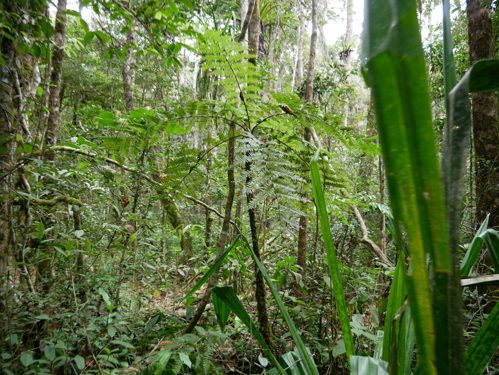
The Mangabe conservation landscape
We're safeguarding the extraordinary biodiversity found in the region and creating prosperity for the human communities of Mangabe through sustainable forest management.
Specialists
Find out more about the conservation experts who work on this project.

Head of Ectotherms

Ectotherms General Manager

Head of Plants

Project Officer (Madagascar & the Mascarenes)
The Mangabe Landscape represents 27,346 hectares of crucial protected area
In 2015, the Mangabe-Ranomena-Sahasarotra protected area (Mangabe) was created to safeguard the extraordinary biodiversity found in the region and create prosperity for the human communities of Mangabe through sustainable forest management.
For 10 years we’ve supported our Malagasy partner, Madagasikara Voakajy (MV), in a relationship that goes back further than Mangabe’s creation.
Through years of rigorous research, the NGO has developed a deep understanding of the endemic species treasure trove found in Mangabe. Species living wild here and nowhere else outside of Madagascar include numerous lemur species and one of the rarest frogs on Earth: the golden mantella. A number of actions have helped improve the situation for each, and we’re proud to lend our support both on the ground and from afar.
The golden mantella
In 2004 the golden mantella frog was one of the amphibian species most at risk of extinction, classified as Critically Endangered by the IUCN. Availability of the tiny forest pools that it relies on to breed had been steadily declining due to deforestation and mining such that fewer than 100 remained in good condition by 2019.
The work of the MV team to study the frog’s development and microclimatic needs has advanced our understanding of how to protect them. We’ve also been able to play a part with our ex-situ population here at Chester, studying the frog’s calls and developing a new method of carrying out capture-mark-recapture wildlife monitoring. A small, harmless UV-reactive marker is implanted in the leg and allows teams in the field to recognise if the mantella individuals they find are known to them already or not.

Combine all of this work with forest restoration and protection and you have a recipe for success. In early 2021 the golden mantella was downlisted from Critically Endangered to Endangered, owing the enormous increase in breeding sites within the Mangabe area.
Lemurs
Amphibians aren’t the only group to benefit from conservation work in Mangabe. Three species have been doing well here for some time – the diademed sifaka, the aye-aye and, one of the largest and most famous of lemurs, the indri. A fourth species was once common in Mangabe too – the Critically Endangered black and white ruffed lemur – though as of 2010 sightings of this species in Mangabe had ceased. However, in 2021 a sighting was reported for the first time in a decade, a suggestion that efforts to stop deforestation perhaps are enticing the species’ return, though it remains to be seen if the group will become resident.
While Voakajy’s wildlife monitoring team are busy documenting the presence of all four species, ultimately, the future of these threatened mammals will depend on Mangabe’s continued protection into the years ahead.

The Mangabe story is primarily one of community. The ultimate goal for Mangabe is that responsibility for its care and management is passed from MV into the hands of the people that call Mangabe home. To achieve this requires an immense undertaking – a generation of addressing various challenges and preparing tomorrow’s guardians for the task at hand.
Madagasikara Voakajy’s Youth for Lemur’s programme has already achieved huge success in bringing together the young people of Mangabe and preparing them for the future. Starting with different education activities, here in 2022 Youth for Lemurs is now evolving into its next phase, titled ‘Tanora mihary, mikajy, manorina’ – translating to “Self-sustaining youth who conserve wildlife and help their community.”
The aim of all of these activities is to solidify leadership skills among the young people of Mangabe, and also build a sense of respect and trust for them within their communities. The projects mentioned above were started by them alone, but are now activities that entire communities support and engage with. In time, the project will see a generation inheriting Mangabe that are prepared and able to manage its protection.
This initiative will take time, and so the project has also set up community participation in a multitude of schemes, such a patrols to record illegal activities in Mangabe, through to active involvement in wildlife recording.
In the communities themselves, the project aims to reduce the reliance on the forest through improving agricultural techniques and offering alternative means of income. A detailed restoration plan for three community managed areas of the Mangabe area also lie ahead in the coming months and years.

The harsh reality is that despite all these initiatives, for now forest cover in the Mangabe Reserve continues to slowly decline under the great pressures of illegal logging, mining and clearing for agriculture. The challenges to halt and reverse this in the years ahead will not be easy ones, but hope is far from lost. With a generation of Mangabe’s protectors now emerging as leaders, there’s much cause for optimism.






